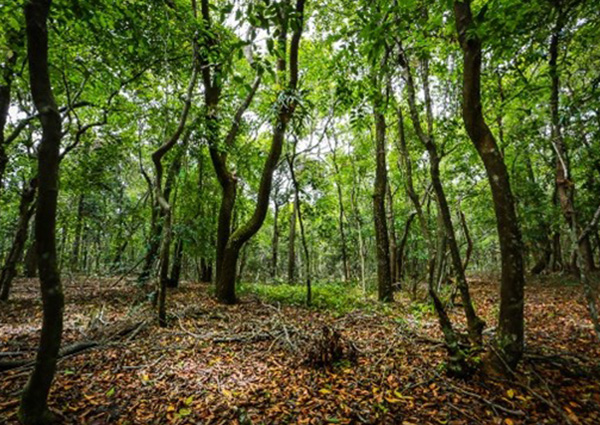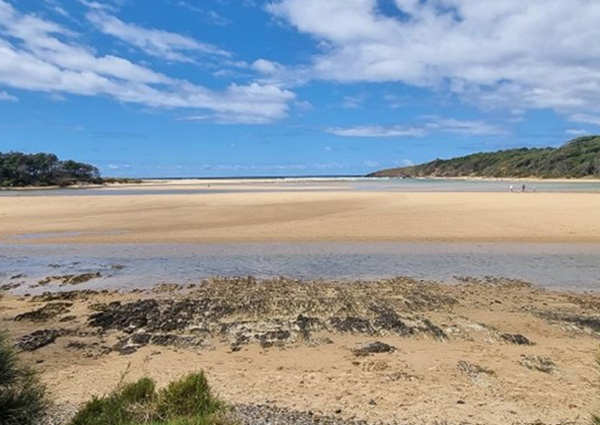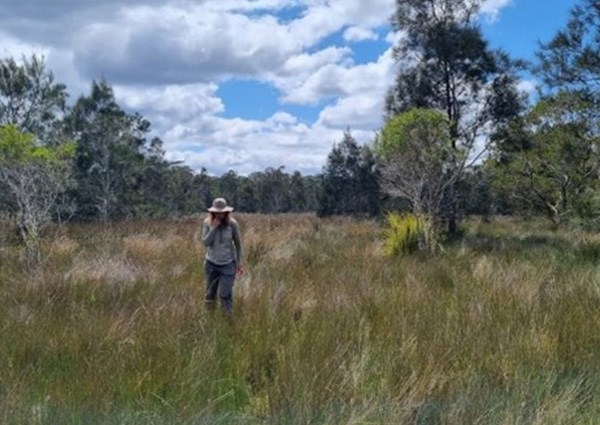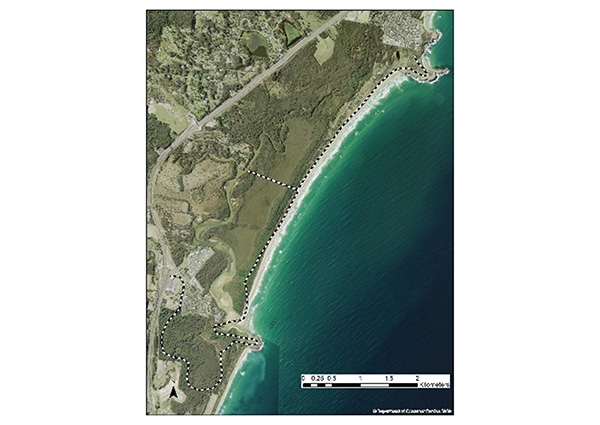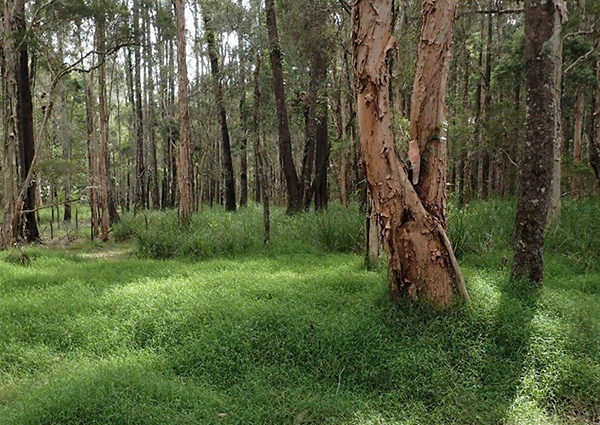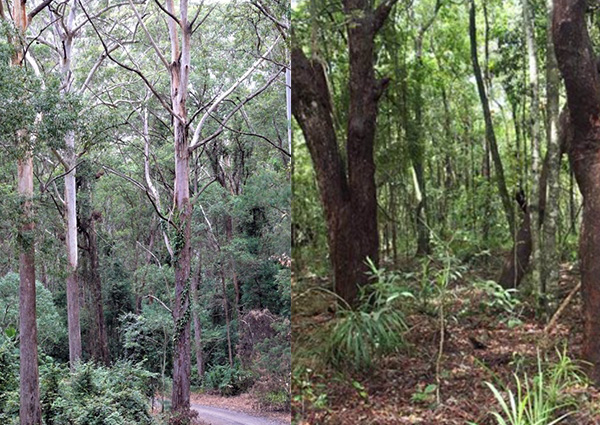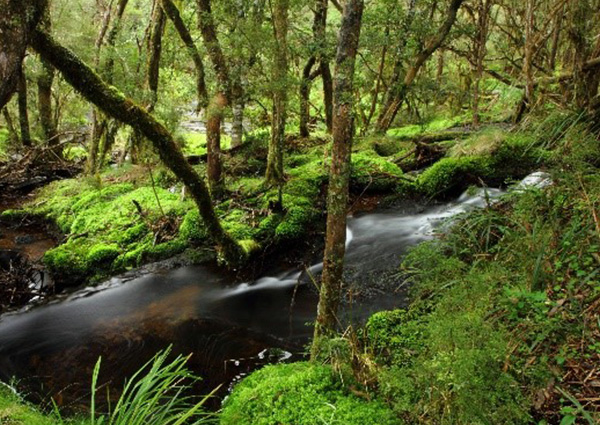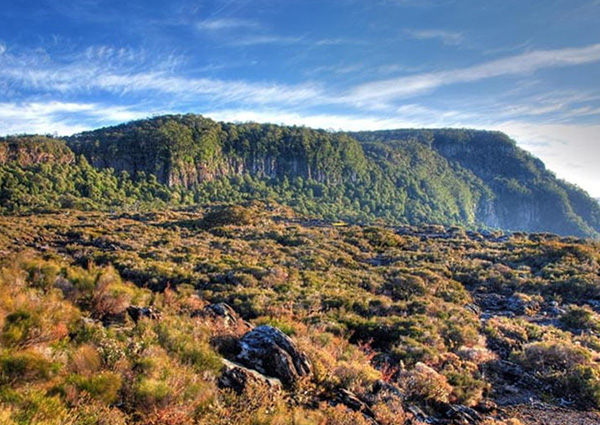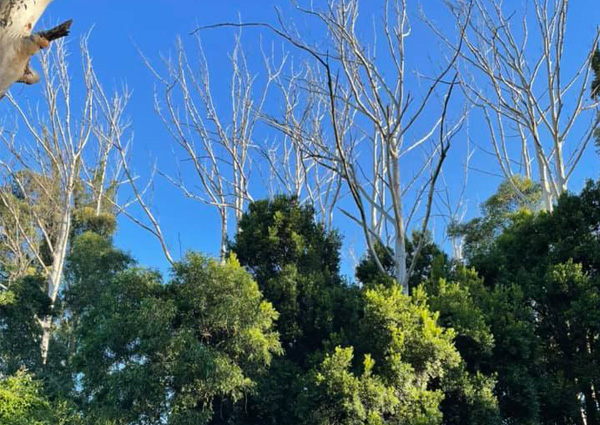Mid-Week Excursions
Moonee Beach Nature Reserve
Moonee Nature Reserve occurs only 10 minutes’ drive north of Opal Cove Resort. The reserve preserves a large variety of both state and federally listed endangered coastal vegetation systems and is surrounded by peri-urban landscapes. The peri-urban pressure and completion of a major highway to the west has created some interesting issues for both flora and fauna. The main feature of the reserve is Moonee Beach itself and an associated headland and estuary system. The proposed field trip will involve walking between two major headlands separated by Moonee Beach and visiting hind-dune littoral rainforests, eucalypt forest, Melaleuca and Casuarina swamp forest, and heath and estuarine systems, such as salt marsh and mangrove. Seven endangered vegetation communities occur here along with a number of threatened plant species including the Moonee Quassia (Quasia sp. ‘Moonee Creek’), Headland Zieria (Zieria prostrata), Coastal Bush Pea (Pultenaea maritima) and Austral Toadflax (Thesium australe).
Guide: Adj. Professor John T. Hunter
Walk Grade: 13 km in total. Easy, level walking with some tree roots, mud and soft sand. Estuary crossing at low tide knee to waist deep.
What to bring: Hat, sunscreen, walking shoes, camera.
Facilities: Toilets at Emerald Beach and Moonee caravan park and Moonee shops but no facilities during much of the day.
Glenugie Peak
This is an isolated, prominently raised eruption point of a Tertiary ultramafic into the surrounding, largely flat to rolling terrain of the Triassic-age Clarence - Moreton basin sandstone and argillaceous sediments. This creates a markedly different vegetation community array over a small distance near the peak. The peak rises 250 metres above the surrounding landscape, with the majority of the rise occurring within the 60 hectares that includes the peak and its surrounding circumnavigating fire trail. An old road rises up to the peak, but it is overgrown and can be slippery if it has rained. The surrounding vegetation is dominated by ironbark and spotted gum open forest with a grassy understorey and a surprising diversity, and areas of wet sclerophyll forest near the peak. The climber is rewarded with a localised patch of dry subtropical rainforest with prominent lianas on a blocky scree. Several species of plants are reaching their distribution limits at this location or are unique to this site. Minor deviations from the main walk route take the walker into swamp forests and narrow riparian lines.
The tour will start beside the Pacific Motorway at Lookout Road and have a relatively flat walk for about 4 km to the foot of the peak. The circumnavigating track is about 2.5 km in length and the walk downhill back to the highway at Franklin Road is also about 2.5 km long.
Guide: Greg Steenbeeke
Walk Grade: 12 km in total. The majority of walk is moderate to easy grade, with the opportunity to do a strenuous sharp climb to the peak (about 140 m rise at 20 degrees total length about 1 km in length).
What to bring: Hat, sunscreen, walking shoes, camera.
Facilities: There are no facilities at Glenugie Peak stops can be made on the way there and back for toilet facilities.
Bongil Bongil National Park
Bongil Bongil National Park (NP), 20km south of Coffs Harbour, is a highly biodiverse, low-relief, coastal landscape which connects subtropical hinterland hills to the seashore. It supports one of the largest populations of Koala in NSW. This reserve supports very tall wet and dry eucalypt-dominated open forests, extensive warm temperate-subtropical rainforest gullies, a mosaic of tall swamp sclerophyll forests on the Pine Creek floodplain, tracts of coastal dune and headland littoral rainforests and foredune shrubland and grassland. On this daytrip we will visit Swamp Forest communities including Swamp Oak (Casuarina glauca) open forest with, in places, a dense groundcover of the threatened local endemic Floyd’s Grass (Alexfloydia repens). The Swamp Oak community here is characterised by the prevalence of numerous large specimens of the epiphytic ferns Platycerium bifurcatum and P. superbum adorning the overstorey trees. We will pass through extensive tracts of low-relief Coastal Blackbutt (Eucalyptus pilularis) sclerophyll forest, and see a large littoral rainforest stand on the 6km (3km each way) Bundageree Rainforest Walk, which also traverses coastal dune Pink Bloodwood (Corymbia intermedia) dry sclerophyll forest, Acacia sophorae shrubland and Spinifex hirsutus foredune grassland, with a return loop, if conditions permit, down the beach back to Tuckers Rocks. Three Littoral Rainforest (LRF) associations can be experienced on this trip – Headland Brush Box (Lophostemon confertus) LRF; Tuckeroo (Cupaniopsis anacardioides)- Coastal Banksia (Banksia integrifolia) Foredune LRF and Riberry (Syzygium luehmannii) coastal dune LRF.
Guide: Peter Richards, local botanist.
Walk Grade: Easy, level walking with some tree roots, mud, and soft sand.
What to bring: Hat, sunscreen, walking shoes, camera, binoculars.
Facilities: Toilet facilities at Bongil Bongil Picnic Area only.
Dorrigo and New England National Parks
Killungoondie Plain is near the northern boundary of the Dorrigo NP Gondwana Rainforests of Australia World Heritage Area (WHA). It is a near-unique high elevation grassy plain surrounded by a complex mosaic of tall Eucalypt forests and Gondwanan Warm and Cool Temperate Rainforests. It contains endemic species and is likely a result of the long-term application of fire by the Gumbaynggirr people. It contains the headwaters of Wild Cattle Creek, the south-eastern most parts of the Clarence River catchment, the largest coastal catchment in NSW. It is a spectacular place filled with fascinating biota. Point Lookout is the highest point in the New England NP Gondwana Rainforests of Australia WHA. It is a simply spectacular subalpine and cool temperate rainforest realm with large expanses of Gondwanan ecosystem including some of the finest Antarctic Beech stands on Earth, as well as Snow Gum dominated subalpine woodlands, montane heaths and swamps and a great diversity of endemic species, including ice-age relicts and the most important populations of many additional species. It is amongst the most cherished of natural areas in Northern NSW.
Guide: Mark Graham
Walk Grade: Easy, level walking with some tree roots, mud.
What to bring: Hat, sunscreen, walking shoes, camera.
Facilities: Toilets at Dorrigo and New England National Parks.
Dieback, Forest Health and Forest Management
Explore the hinterland forests of Coffs Harbour to look at eucalypt decline/dieback and myrtle rust and discuss the implications for forest management. The trip will visit a number of different forest types including Dunn’s White Gum, Blue Gum and Moist hardwood forests. The day will finish with a short walk in subtropical rainforest in Orara East State forest.
Guides: Justin Black - Forester, Dr Angus Carnegie - Forest research scientist, and Chris Slade - Senior ecologist.
Walk Grade: Easy with a moderately difficult short walk on formed track in the afternoon (option to visit lookout as an alternative to the afternoon short walk).
What to bring: Hat, sunscreen, walking shoes, camera, binoculars.
Facilities: A toilet stop or two are planned.

